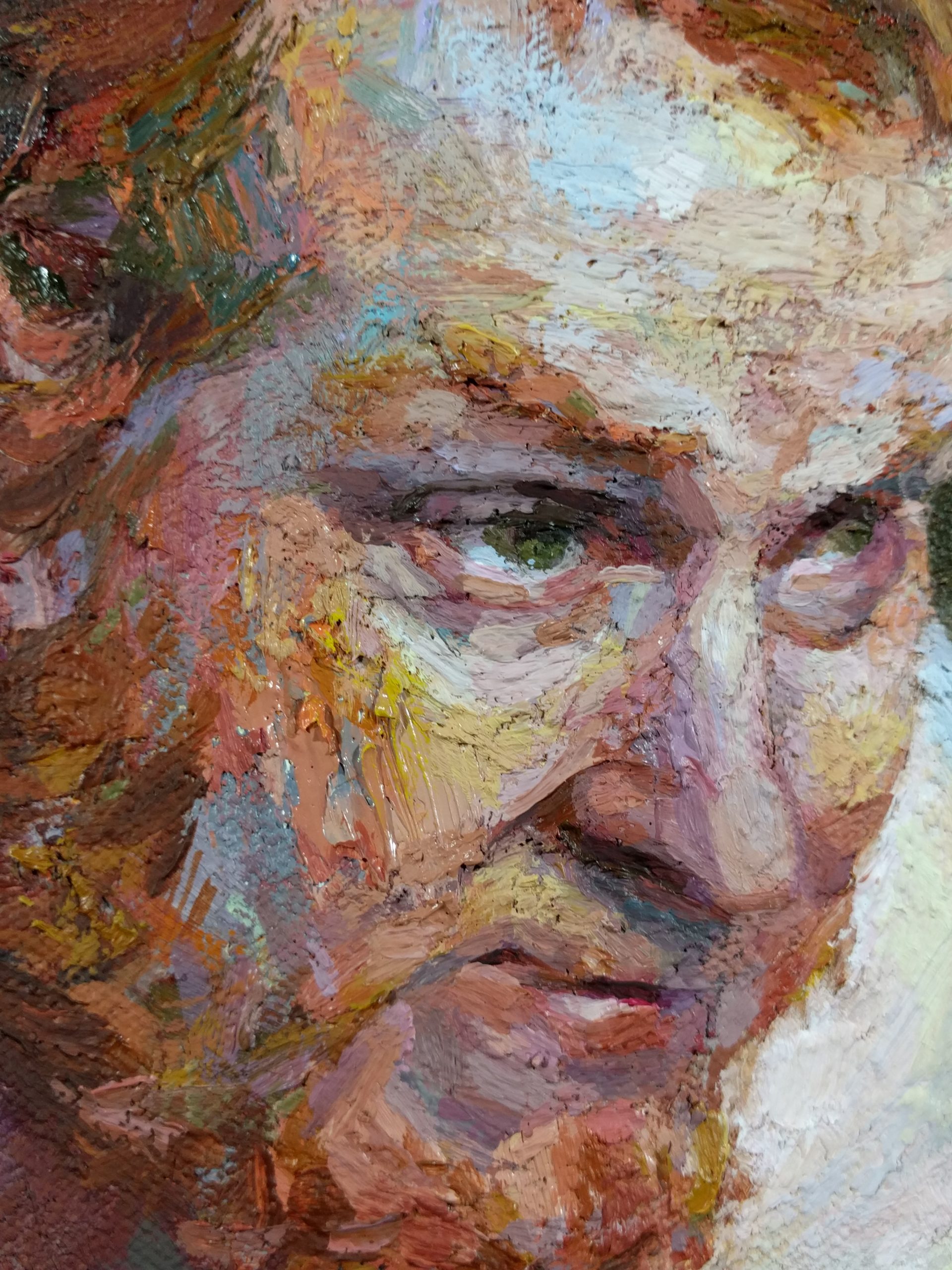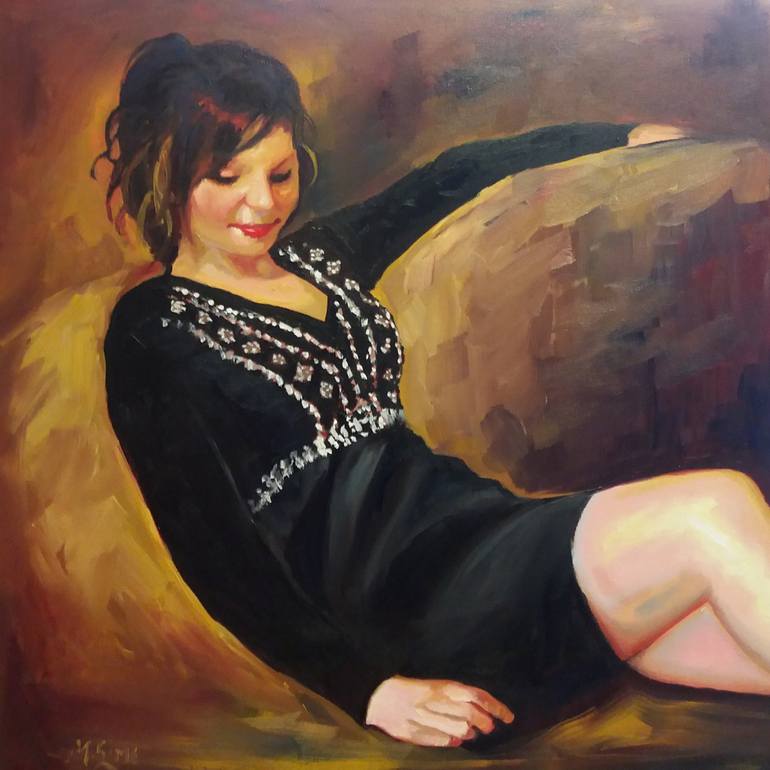Why Figurative Oil Painting Remains a Classic Selection for Artists
Why Figurative Oil Painting Remains a Classic Selection for Artists
Blog Article
The Evolution of Metaphorical Oil Painting: Comprehending Its Historical Importance and Modern Interpretations
The development of figurative oil painting serves as an engaging lens with which to check out the interaction in between artistic expression and historical context. Contemporary artists, drawing from this rich heritage, are now reinterpreting the human number in ways that test standard narratives.
Beginnings of Metaphorical Oil Painting
The beginnings of metaphorical oil paint can be mapped back to the very early Renaissance in Europe, especially in the 15th century. The advancement of oil paint permitted for higher deepness of color and detail, improving the realism and vibrancy of their job.

In this transformative era, figures were frequently illustrated within contextually rich settings, showcasing not just their physical qualities but additionally their mental states. Pioneers such as Jan van Eyck and Titian harnessed the tool's versatility, employing layering techniques to achieve luminosity and texture. This innovation assisted in the representation of complex textiles and the nuances of skin tones, adding to the development of portrait and narrative scenes.
Furthermore, the Renaissance focus on humanism cultivated an admiration for distinctiveness, which subsequently influenced artists to create more vibrant and relatable figures - figurative oil painting. Therefore, metaphorical oil painting arised as a powerful vehicle for storytelling and emotional engagement, laying the foundation for future artistic motions and styles
Secret Historical Motions
Substantial historic movements have actually shaped the development of metaphorical oil paint, each adding special viewpoints and methods that expanded the medium's possibilities. The Renaissance noted a crucial minute, highlighting realism and the human type, with artists like Leonardo da Vinci and Michelangelo pushing the boundaries of anatomical accuracy and perspective. Following this, the Baroque age brought remarkable contrasts of light and darkness, exhibited by Caravaggio, who infused spiritual styles with intense emotionality.
The 19th century introduced Romanticism and Realistic look, where artists such as Delacroix and Courbet tested timeless perfects, focusing on private expression and day-to-day life. The development of Impressionism even more reinvented the medium by emphasizing the effects of light and shade, resulting in a departure from standard representation.
In the very early 20th century, movements like Expressionism and Cubism redefined metaphorical paint through abstraction and the exploration of psychological depth. Each of these movements not just showed the social changes of their times but additionally prepared for contemporary interpretations. The interaction in between these historical motions has actually developed a rich tapestry of styles and approaches, influencing modern-day artists in their search of catching the human experience on canvas.
Techniques and Products Evolution

Throughout the Baroque period, techniques such visite site as chiaroscuro and sfumato emerged, boosting the psychological resonance of metaphorical structures. Artists began to explore lusters and impasto, manipulating structure and luminosity. By the 19th century, advancements like making use of pre-mixed paints in tubes changed ease of access, allowing artists to paint en plein air and capture the short lived impacts of light.
The 20th century experienced the intro of artificial pigments and mediums, which broadened the palette and altered the uniformity of oil paints. Moreover, the expedition of brand-new application methods, such as scheme knives and brushes of varying rigidity, additional diversified imaginative expression. Collectively, these innovations mirror the advancing partnership in between products, techniques, and the artistic vision intrinsic in figurative oil paint.

Contemporary Analyses
Contemporary interpretations of figurative oil paint show a dynamic dialogue in between custom and technology, where musicians test developed norms and explore diverse themes. This development manifests in numerous methods, as contemporary musicians blend timeless strategies with contemporary concepts, commonly dealing with social, political, and personal narratives.
Several professionals attract motivation from historic works, yet they instill their items with modern viewpoints, utilizing the human form as a lorry for commentary on sex, culture, and identification. Artists increasingly trying out abstraction, distortion, and multimedias, which enables a more comprehensive analysis of the figure and its context.
Moreover, have a peek at this site making use of vibrant shade combinations and unusual compositions often offers to interfere with typical viewing experiences, prompting crucial interaction from target markets. This change in emphasis extends beyond aesthetic appeals; it reflects a growing recognition of the intricacies of human experience in an interconnected world.
As metaphorical oil painting proceeds to develop, it remains a crucial tool for discovering the subtleties of contemporary life, symbolizing both a respect for heritage and a commitment to progressive thought. The result is a rich tapestry of expression that reverberates with the complexities of the modern-day human problem.
Effect On Modern Art
The influence of figurative oil paint on modern art is profound, as it has consistently influenced a myriad of creative activities and practices throughout the 21st and 20th centuries. From Expressionism to Surrealism and beyond, the exploration of the human number has remained a central style, permitting musicians to communicate complicated feelings and narratives. This emphasis on figurative representation has brought about a re-examination of conventional strategies, resulting in ingenious strategies that mix realistic look with abstraction.
Furthermore, contemporary artists have actually welcomed metaphorical oil painting as a way to attend to political and social issues, using the medium to challenge perceptions of culture, gender, and identification. The revival of interest in metaphorical operate in recent years shows a yearning for connection in a significantly digital world, where human experience and feeling are vital.
Additionally, the dialogue in between metaphorical oil painting and modern art is obvious in the works of artists such as Kehinde Wiley and Jenny Saville, browse this site that draw on historical recommendations while infusing their pieces with modern significance. Inevitably, figurative oil paint remains to shape and redefine modern-day imaginative expression, emphasizing its long-lasting value in the art globe.
Conclusion
The advancement of figurative oil paint highlights its historical significance and versatility across numerous imaginative movements. Inevitably, metaphorical oil painting continues to be a crucial medium for exploring the human experience, resonating exceptionally in today's electronic landscape.
The advancement of figurative oil painting offers as a compelling lens through which to check out the interaction between artistic expression and historic context.Significant historical activities have shaped the evolution of metaphorical oil painting, each contributing distinct viewpoints and strategies that expanded the medium's possibilities.As historical activities formed the trajectory of figurative oil paint, the products and methods used by musicians have additionally undertaken significant transformations. figurative oil painting.The impact of figurative oil paint on contemporary art is extensive, as it has consistently inspired a myriad of artistic activities and techniques throughout the 20th and 21st centuries.The development of metaphorical oil paint emphasizes its historical significance and versatility across different creative movements
Report this page